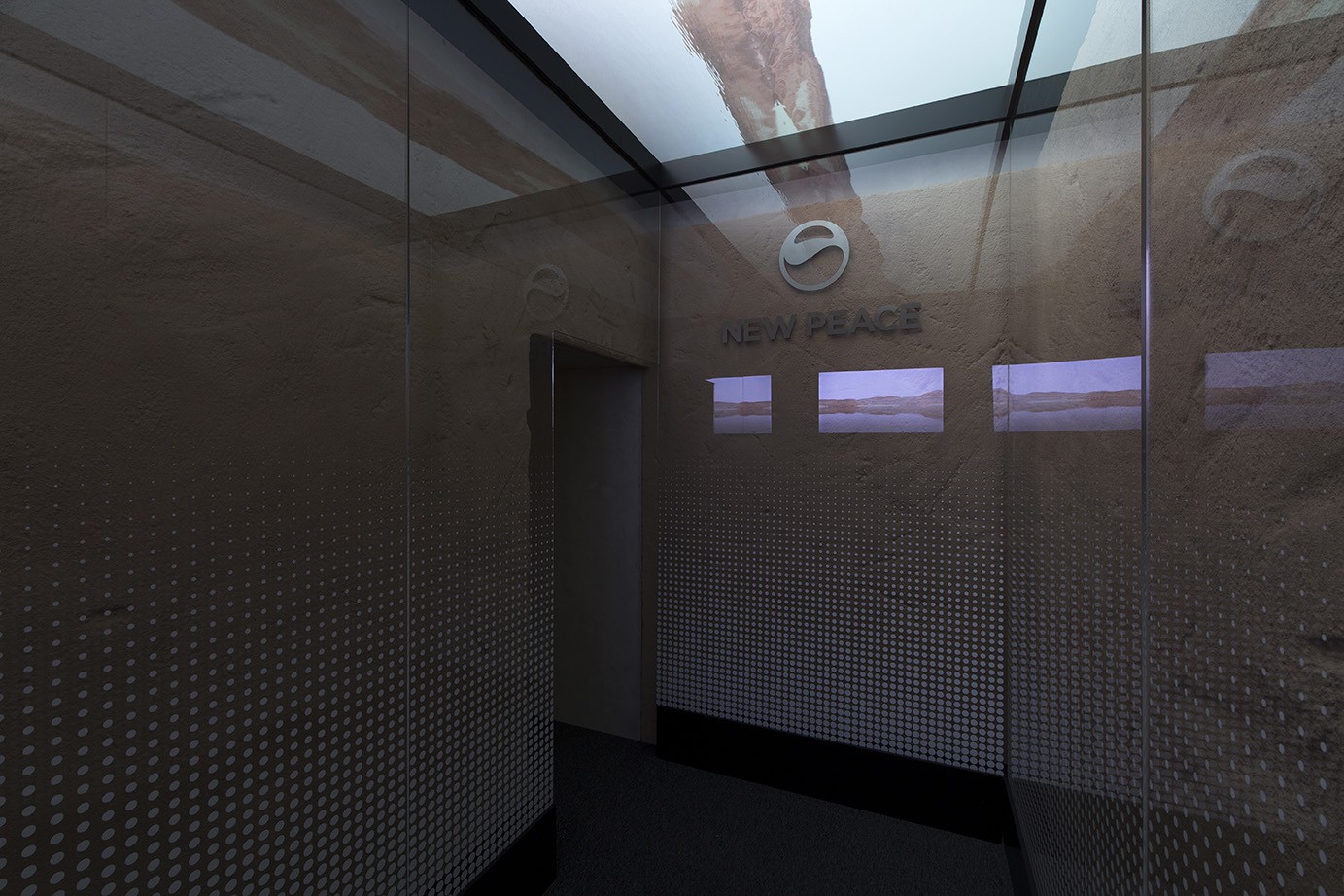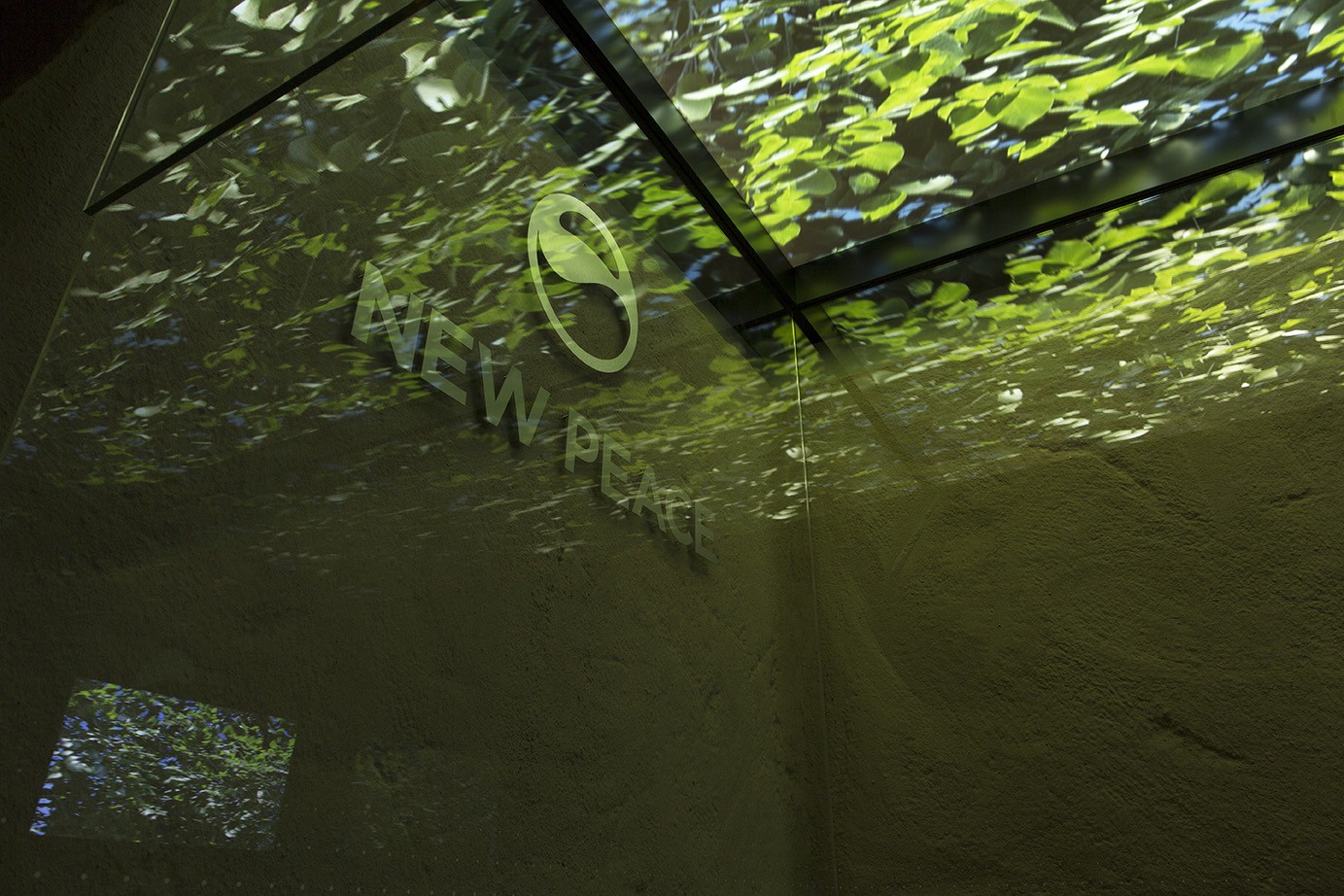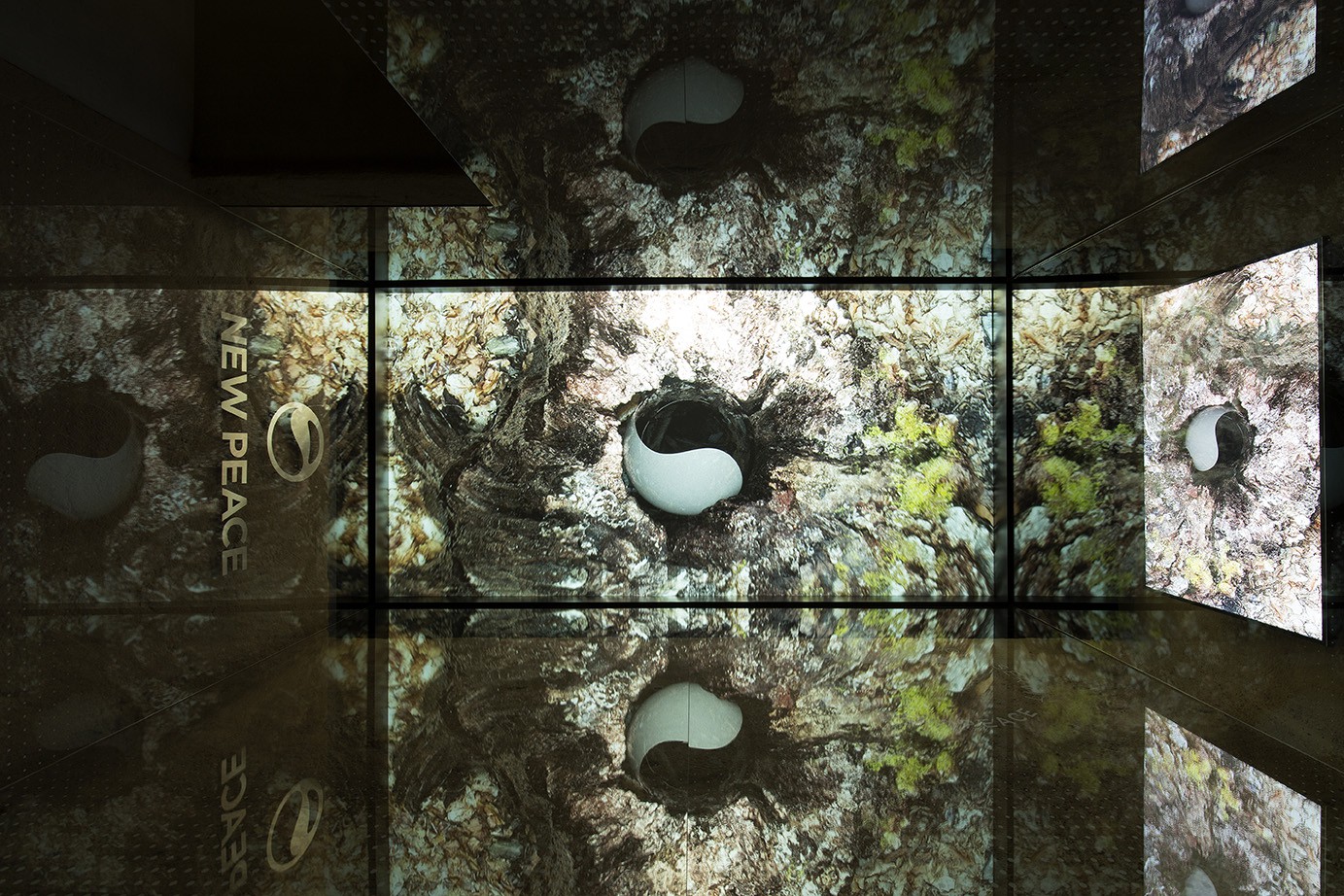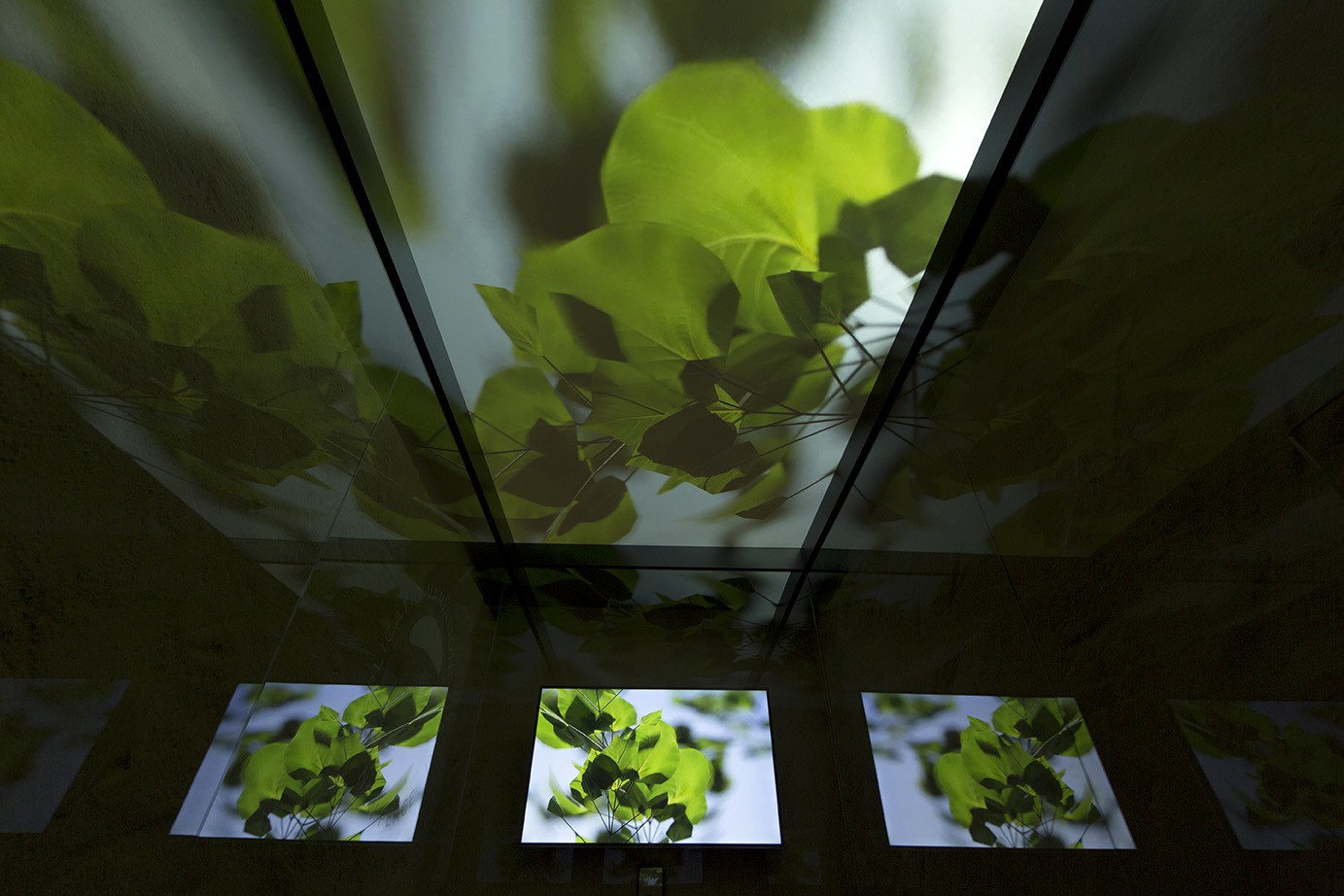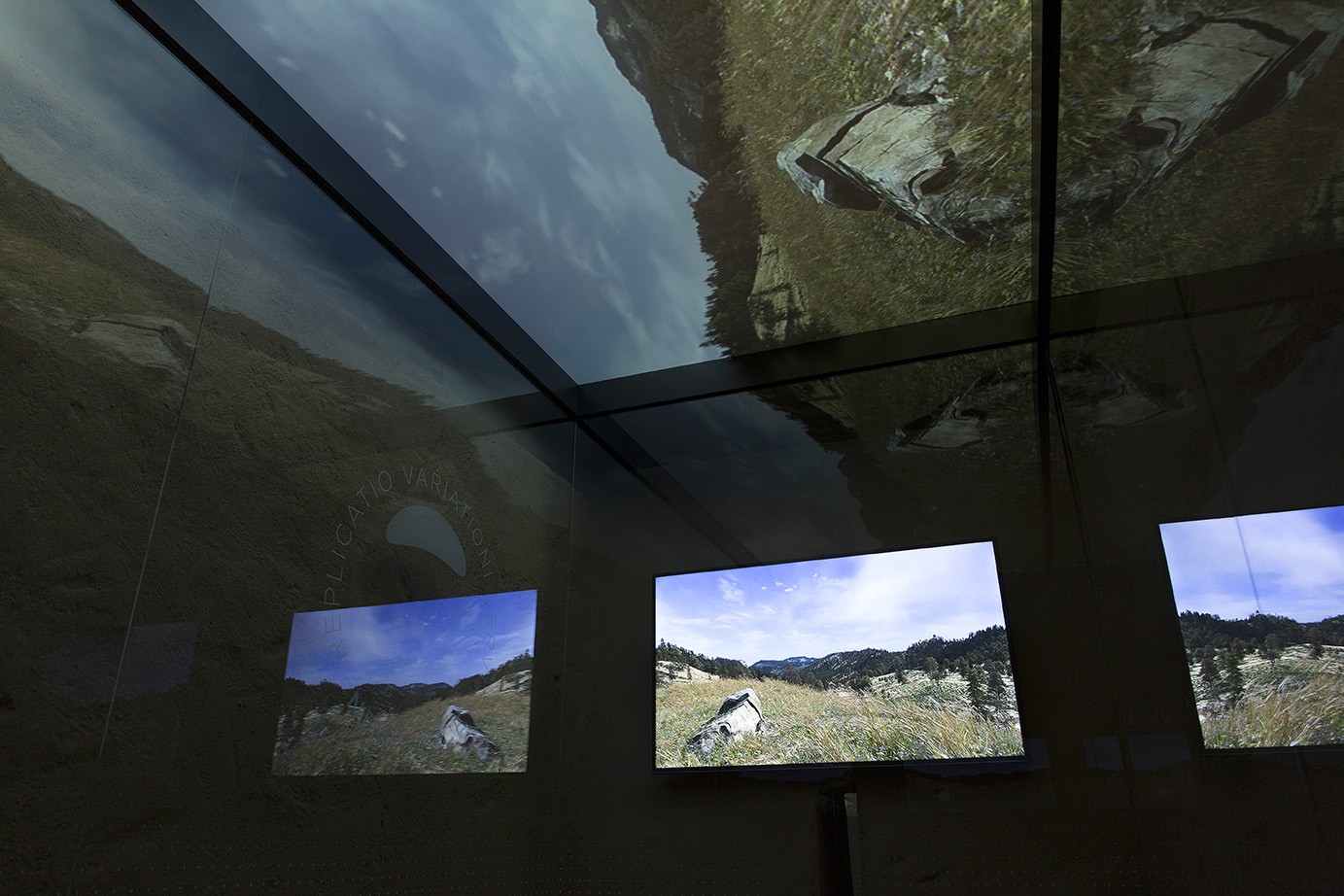Timur Si-Qin
Art Basel Statements 2016
June 13 – 19, 2016
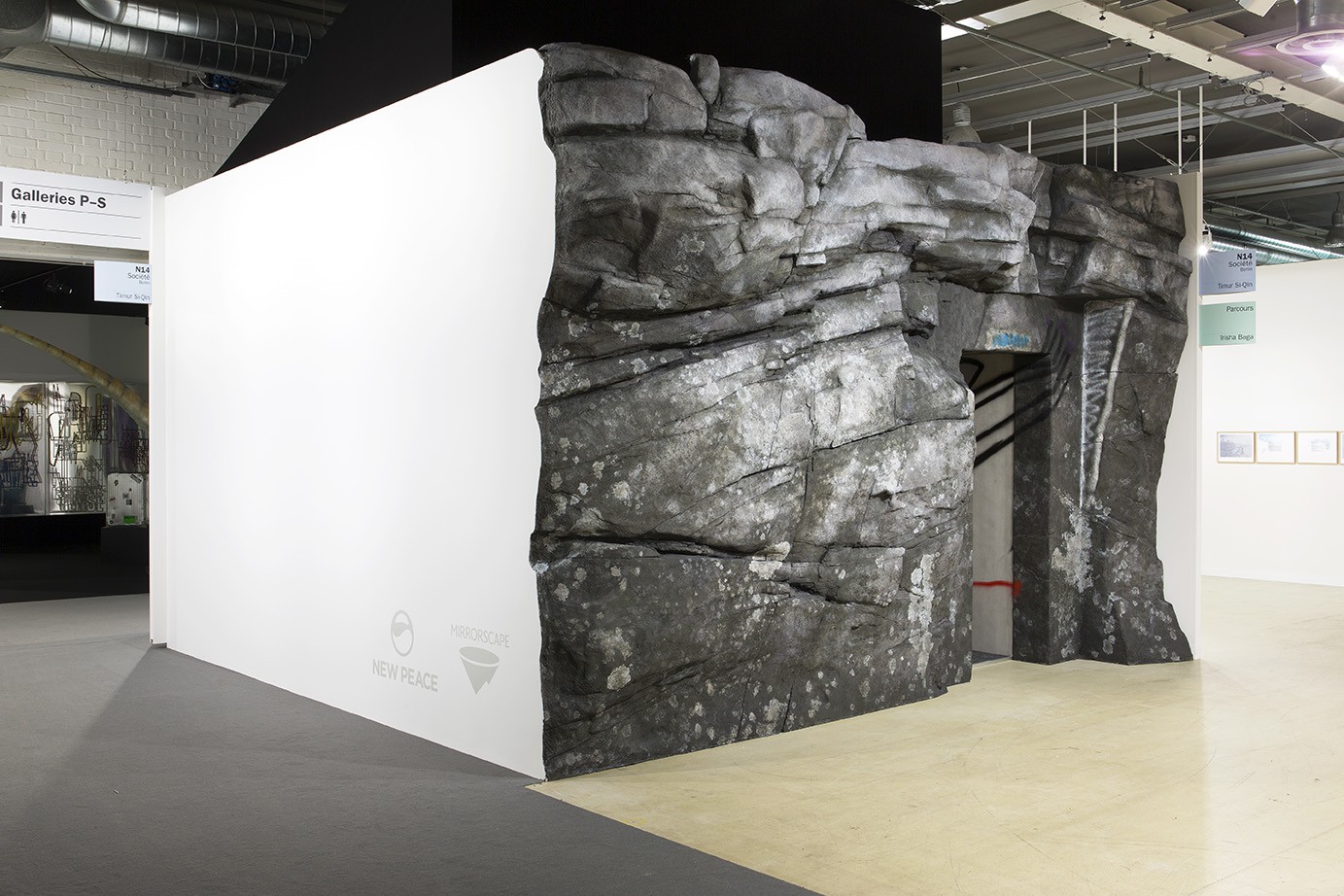
Installation view, Art Basel Statements 2016
New Peace Prayer Chamber, Art Basel Statements 2016, curated by Gianni Jetzer
In his work, Si-Qin combines and alters forms and materials from culture in order to examine the way that, over time, they have come to carry meaning. He is interested in what attracts vast groups of people to specific forms and subjects. And he likens those specific forms and subjects to reflect the tendencies and capacities of culture as a dynamic and emergent material process.
Si-Qin’s new work for Art Basel Statements 2016 elaborates on this process by envisioning a prayer space, entitled New Peace, for a future religion. The religion is grounded in a philosophy of material immanence. With a disbelief in eternal essences, New Peace stands for an infinitely open-yet-causal reality of emergent and contingent entities. And for the belief universe exists in order for matter to experience all variations of itself.
The prayer space contains the video-mantra Mirrorscape. It is a sub-brand, a spiritual destination and a state of mind all at once – represented by the iconography of the simulated landscape. The simulated landscape alludes to both the digitality of matter as well as the peculiar yet sacred ability of matter to simulate its own future.
New Peace and Mirrorscape are also the latest evolution of Si-Qin’s interest in branding, iconography and the psychology of marketing. Si-Qin thinks of brands as ecological sculptures that distribute themselves topologically – as defined by their environments and relations. Brands extend throughout several times and various spaces, each time inheriting new meanings. The New Peace logo, a rebrand of PEACE, follows Si-Qin’s interest in the way that signs can be combined to create or cancel out meanings. Si-Qin’s combination of the word ‘peace’ and the taijitu symbol serves to disarticulate sign and signifier: the taijitu doesn’t have a direct connection with the concept of peace. In this way, Si-Qin investigates the extent to which something can stand for something else and to what extent symbols and images can take on new meanings, revealing a lack of essence.
The lack of universal essences as well as primary teachings of Buddhism, Taoism and systems theory are also at the heart of Si-Qin’s motivation in using the aesthetics and imagery of advertising and commerce. In order to hedge against the idea that images can be read as the essence of contemporary ideologies, a form of stereotyping. Si-Qin instead adheres to the belief that aesthetics, like everything else, are contingently formed.
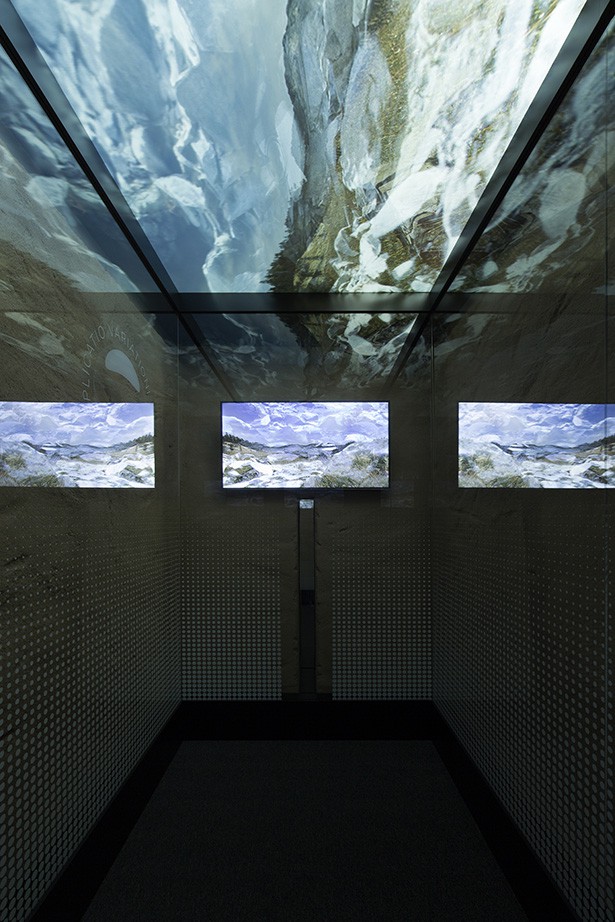
Installation view, New Peace Prayer Chamber, Art Basel Statements 2016
